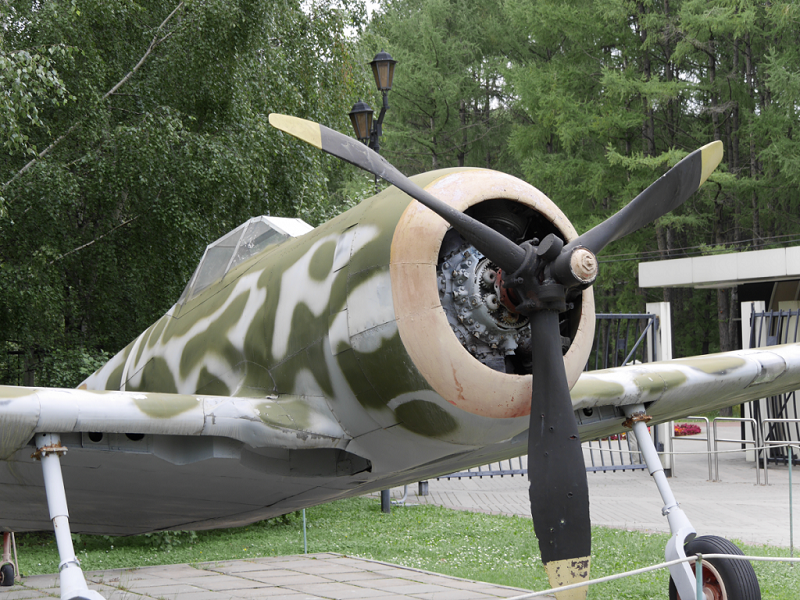The Nakajima Ki-43 Hayabusa (隼, “Peregrine falcon”), formal Japanese designation Army Type 1 Fighter (一式戦闘機, Ichi-shiki sentōki) is a single-engine land-based tactical fighter used by the Imperial Japanese Army Air Service in World War II.
The Allied reporting name was “Oscar”, but it was often called the “Army Zero” by American pilots because it bore a certain resemblance to the Mitsubishi A6M Zero, the Imperial Japanese Navy’s counterpart to the Ki-43. Both aircraft had generally similar layout and lines, and also used essentially the same Nakajima Sakae radial engine, with similar round cowlings and bubble-type canopies (the Oscar’s being distinctly smaller and having much less framing than the A6M).
While relatively easy for a trained eye to tell apart with the “finer” lines of the Ki-43’s fuselage – especially towards the tail – and more tapered wing planform; in the heat of battle, given the brief glimpses and distraction of combat, Allied aviators frequently made mistakes in enemy aircraft identification in the heat of a dogfight, reportedly having fought “Zeros” in areas where there were no Navy fighters.
Like the Zero, the radial-engined Ki-43 was light and easy to fly and became legendary for its combat performance in East Asia in the early years of the war. It could outmaneuver any opponent, but did not initially have armor or self-sealing fuel tanks, and its armament was poor until its final version, which was produced as late as 1945. Allied pilots often reported that the nimble Ki-43s were difficult targets but burned easily or broke apart with few hits.
Total production amounted to 5,919 aircraft. Many of these were used during the last months of the war for kamikaze missions against the American fleet.
The Ki-43 was designed by Hideo Itokawa, who would later become famous as a pioneer of Japanese rocketry. The Ki-43 prototype was produced in response to a December 1937 specification for a successor to the popular fixed-gear Nakajima Ki-27 Nate. The specification called for a top speed of 500 km/h (310 mph), a climb rate of 5,000 m (16,000 ft) in five minutes and a range of 800 km (500 mi). Maneuverability was to be at least as good as that of Ki-27.
When first flown in early January 1939, the Ki-43 prototype was a disappointment. Japanese test pilots complained that it was less maneuverable than the Ki-27 Nate and not much faster. In order to solve these problems, Nakajima produced a series of progressively modified prototypes through 1939 and 1940. These changes involved a major weight saving program, a slimmer fuselage with the tail surfaces moved further aft and a new canopy. Crucially, the 11th prototype introduced the unique differential “butterfly” maneuvering Fowler flaps, which dramatically improved performance in tight turns. The 13th prototype combined all these changes, and tests of this aircraft resulted in an instruction for Nakajima to place the Ki-43 into production, the Ki-27 jigs being transferred to the Mansyu factory at Harbin in Japanese occupied Manchukuo.
Museum of the Victory, Moscow
The Nakajima Aircraft Company (中島飛行機株式会社, Nakajima Hikōki Kabushiki Kaisha) was a prominent Japanese aircraft manufacturer and aviation engine manufacturer throughout World War II. It continues as the car and aircraft manufacturer Subaru.
The Nakajima Aircraft company was Japan’s first aircraft manufacturer, and was founded in 1918 by Chikuhei Nakajima, a naval engineer, and Seibei Kawanishi, a textile manufacturer, as Nihon Hikoki (Nippon Aircraft). In 1919, the two founders split and Nakajima bought out Nihon Aircraft’s factory with tacit help from the Imperial Japanese Army. The company was renamed Nakajima Aircraft Company in 1919.












